Useful information on motorcycle tyres
Tyres are the most important "interface" between motorcycle and road. In fact, they're essential both for the fun of biking and for your safety.
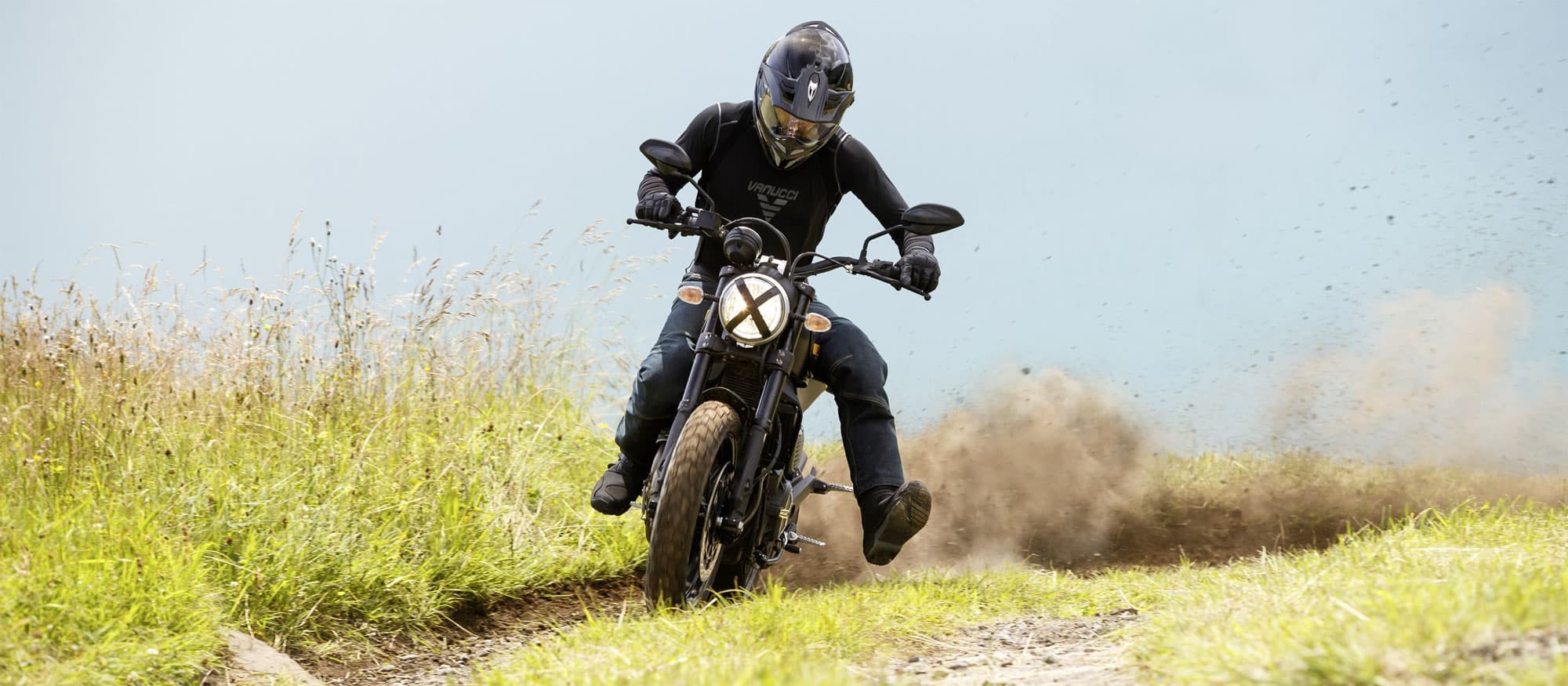
How your motorcycle "feels" is primarily down to your tyres. Furthermore, the stock tyres which come with a motorcycle are not necessarily the best. To find what alternatives are available, you can visit the websites of most major tyre manufacturers and just select "Tyre finder" or "Tyre selector", or ask a professional tyre supplier and fitter, like reifen.com in Germany. Test reports in the trade press are also a valuable guide.
It's worth trying out a different set of tyres now and then because every biker has personal preferences, and all the major tyre brands are of a comparably high quality. You should, however, be extremely cautious when it comes to cut-price tyres from unheard-of brands. Your tyres are the last thing that you should be cutting corners on.
The most important types of tyre
The range of tyres currently on the market is as wide and diverse as the motorcycles on offer and the demands of the bikers who ride them. Specialisation is the key, which is why the following list of tyre types can only give you a broad idea of what is available. There is, of course, overlap between the individual categories.
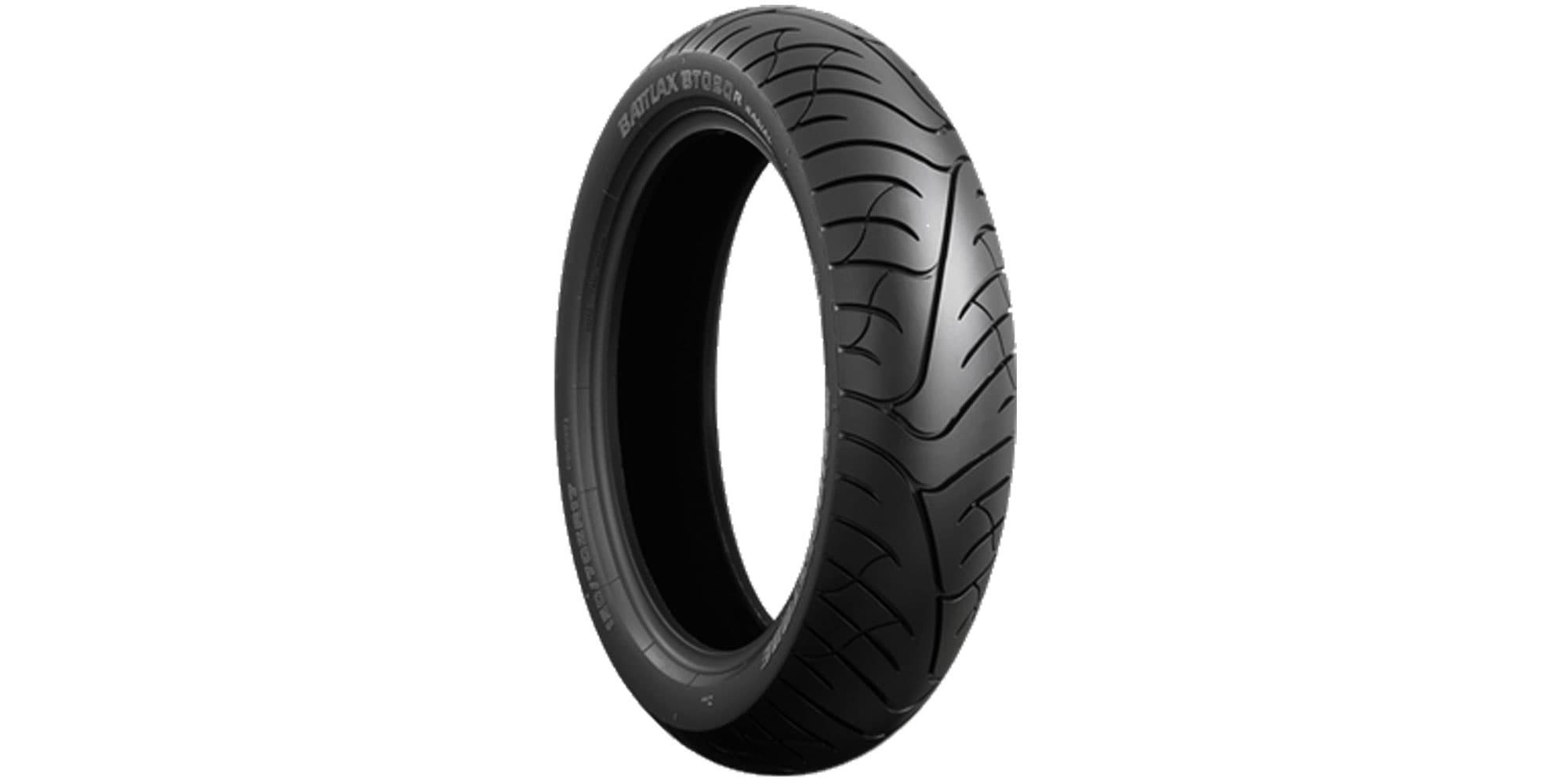
This tyre category represents the greatest challenge for development teams because customer demands are very high and very contradictory. And yet the manufacturers are increasingly successful in rising to the challenge of pleasing everyone. Today's sports touring tyres offer as much grip as out-and-out sport tyres did 10-15 years ago, while their mileage performance and wet grip make them ideal for long holiday tours in any weather.
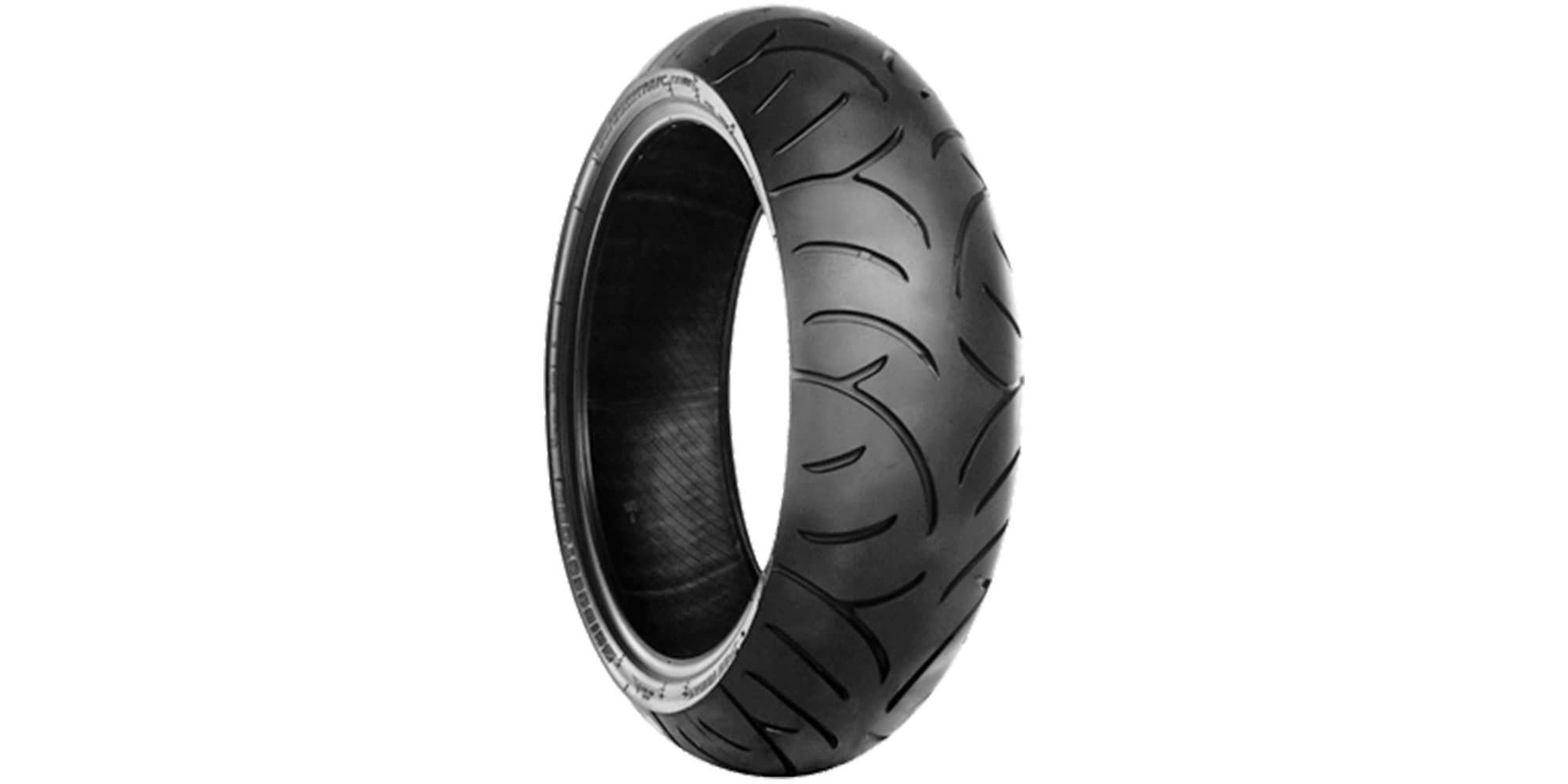
When it comes to tyres for heavy cruisers and touring bikes like the Honda Gold Wing, maximum grip when leaning into corners is less of an issue. Instead, it's more about properties like stability, load-bearing capacity and mileage performance. Extra-wide rear tyres for custom bikes also belong to this category.

The key criteria with these tyres are maximum grip and optimum lap times. The comparatively pointed profile of a sport tyre offers maximum contact with the road when leaning hard into corners – which is vital for accelerating out of a bend. This type of tyre tends to use softer rubber mixtures, which are designed to provide maximum grip, but with the downside that they wear relatively quickly. Many sport tyres only start to grip really well once they have warmed up with riding.
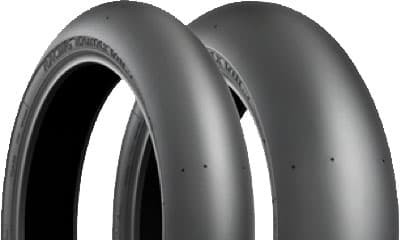
Out-and-out racing tyres are even more extreme in their design: no tread, short life and poor grip when cold - which is why they are strictly for the race track only. There are also in-between versions, e.g. for race training. These are approved for road use, but their performance is still very much tailored to racing.

This type of tyre is specially designed for big enduros like the R 1200 GS. Essentially, they are sport touring tyres with a more or less chunky tread profile. So they're versatile and perform well on different surfaces, at least on asphalt and firm tracks. For more extreme off-road conditions, you'll need the sort of knobbly tyres that can take soft, wet ground and sand in their stride – but, of course, at the cost of road performance.
- road tyres that can handle dirt tracks
- hybrids for rougher ground
- off-road tyres suitable for asphalt

1
Off-road
▬ ▬
Road
▬ ▬ ▬ ▬

2
Off-road
▬ ▬ ▬
Road
▬ ▬

3
Off-road
▬ ▬ ▬ ▬
Road
▬ ▬
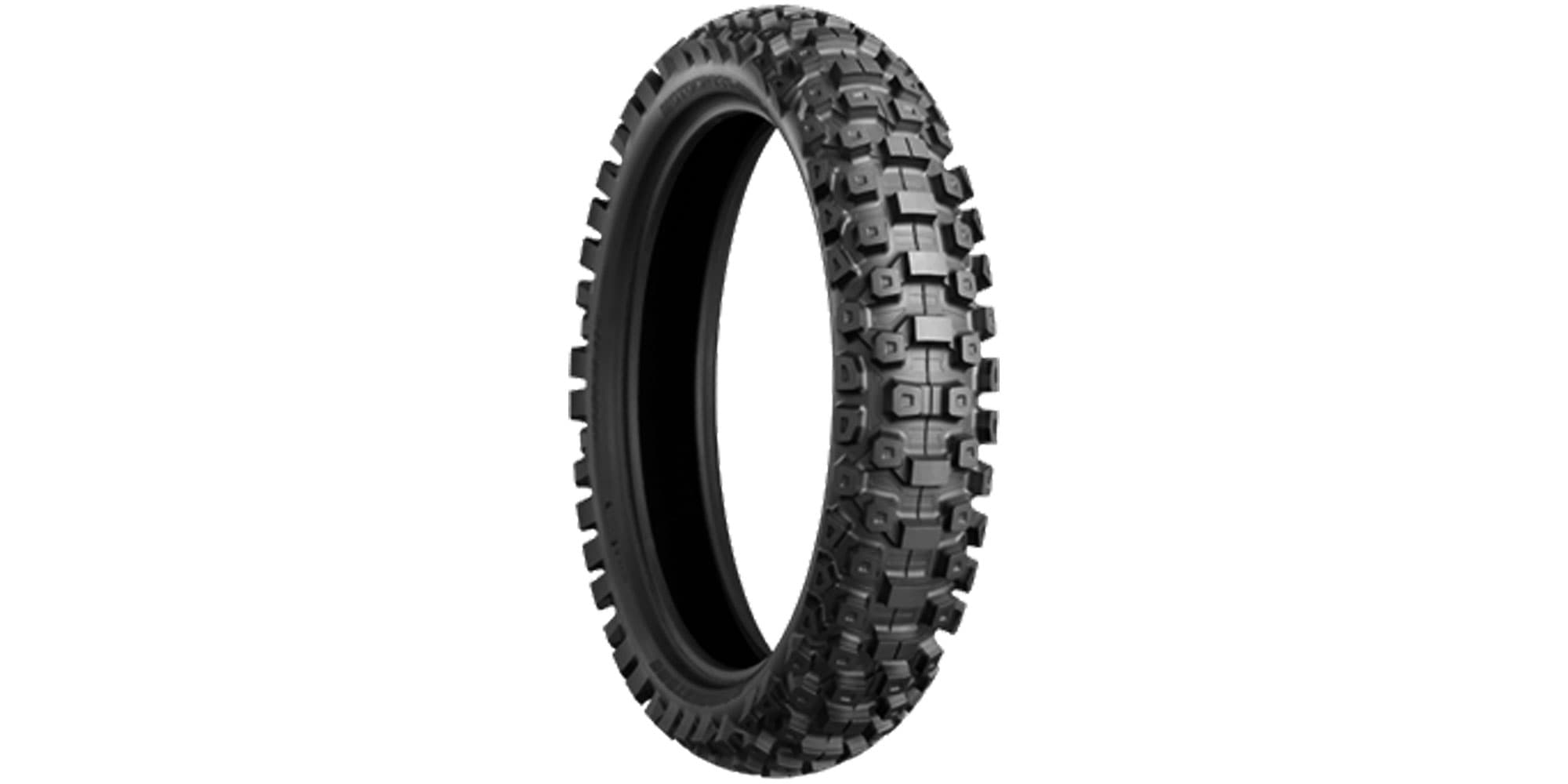
Sand, mud and gravel are what this type of tyre likes best. This is where the rubber knobs are at their most efficient, gripping the rough terrain and delivering superb propulsion. Trial, motocross and enduro riders will find tyres in this category with highly specialised tread patterns for a wide range of riding conditions. The only sort of terrain these off-road tyres struggle to handle is asphalt, where their performance tends to be jerky and soft.
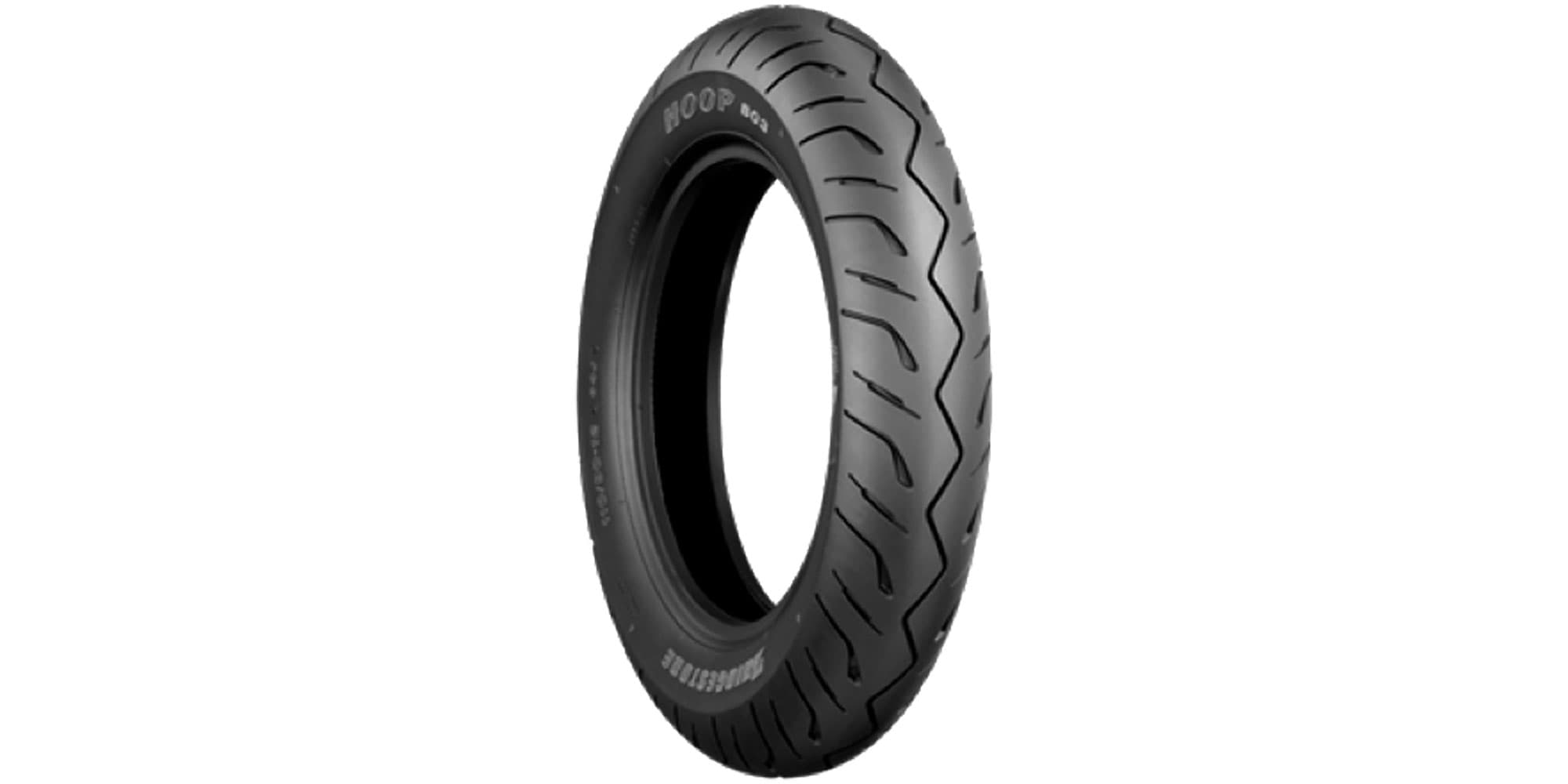
The main difference between scooter and motorcycle tyres is also the most obvious: their size. However, the really tiny 10" tyres of the old Vespas are pretty much a thing of the past. Nowadays, 12-14" tyres are standard – which give improved stability at higher speeds. The design, rubber mixture and tread of modern scooter tyres are very similar to those of their big sisters. They too come in sport, touring and even off-road versions. There is also a type of scooter tyre that's not available for motorbikes: winter tyres with siped tread and rubber mixtures that still offer grip when the thermometer drops to zero and below.
Ensuring a perfect fit: tyre approval
Part I of your motor vehicle registration certificate contains details of the tyre dimensions approved for your motorcycle (see below). Often it also gives manufacturer and model of the original tyres. If you're planning to buy tyres of another make, or even with different dimensions, we recommend that you first check that they have a certificate of approval. This information is generally available from your friendly neighbourhood tyre dealer or to download from the tyre manufacturer's website. And please bear in mind, certificates of approval are not there just to satisfy the police and MOT testers. They also ensure there'll be no nasty surprises when you're on the road, as these certificates are normally only issued after thorough road testing by motorcycle and tyre manufacturers.
Markings on motorcycle tyres
Let's refresh what you learnt on your motorcycle training course. All motorcycle tyres are marked with a multitude of numbers, letters and symbols. Decoding these will tell you everything you need to know about your tyres.
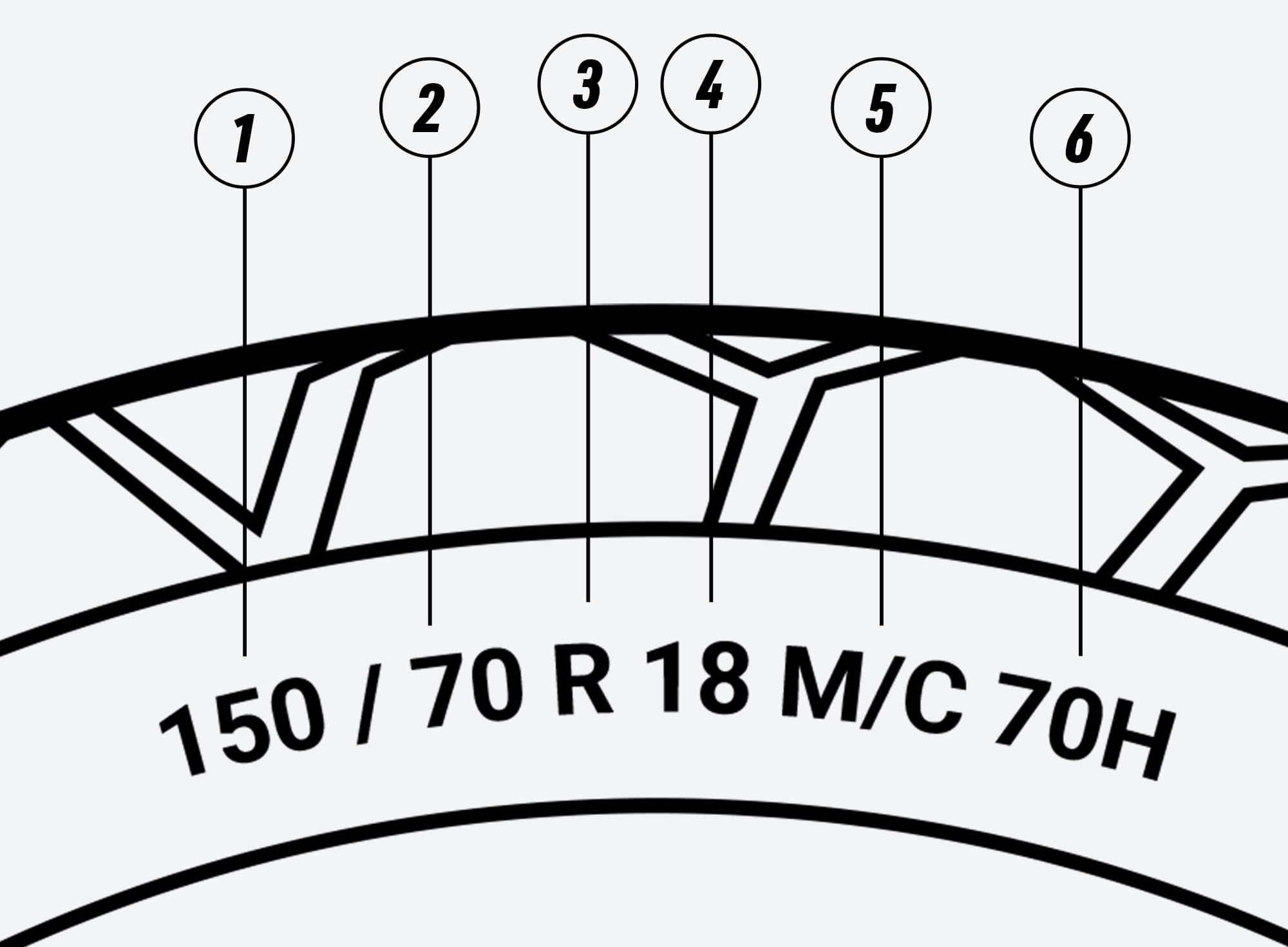
Tyre dimensions
- 150 - Tyre types
- 70 - Ratio of height to width in %
- R - Type of tyre (radial/cross-ply)
- 18 - Rim diameter
- M/C - Motorcycle tyre
- 70H - Speed index / Load index
- TL - Tubeless tyres
Maintenance, inspection and repair of motorcycle tyres
Motorcycle tyres deserve to be looked after, considering they are largely responsible for the biking enjoyment you will experience on the road – not to mention your safety.

Checking the age of your tyres
Knowing the manufacture date of a tyre is important: the older the tyre, the more it loses elasticity, which reduces its ability to grip on asphalt. For this reason, all tyres have an oval field on the sidewall containing a 4-digit number that represents the date of manufacture. Example: the number 1915 doesn't mean you're still driving around with rubber from World War I. Rather, your tyres were made in the 19th week of 2015.
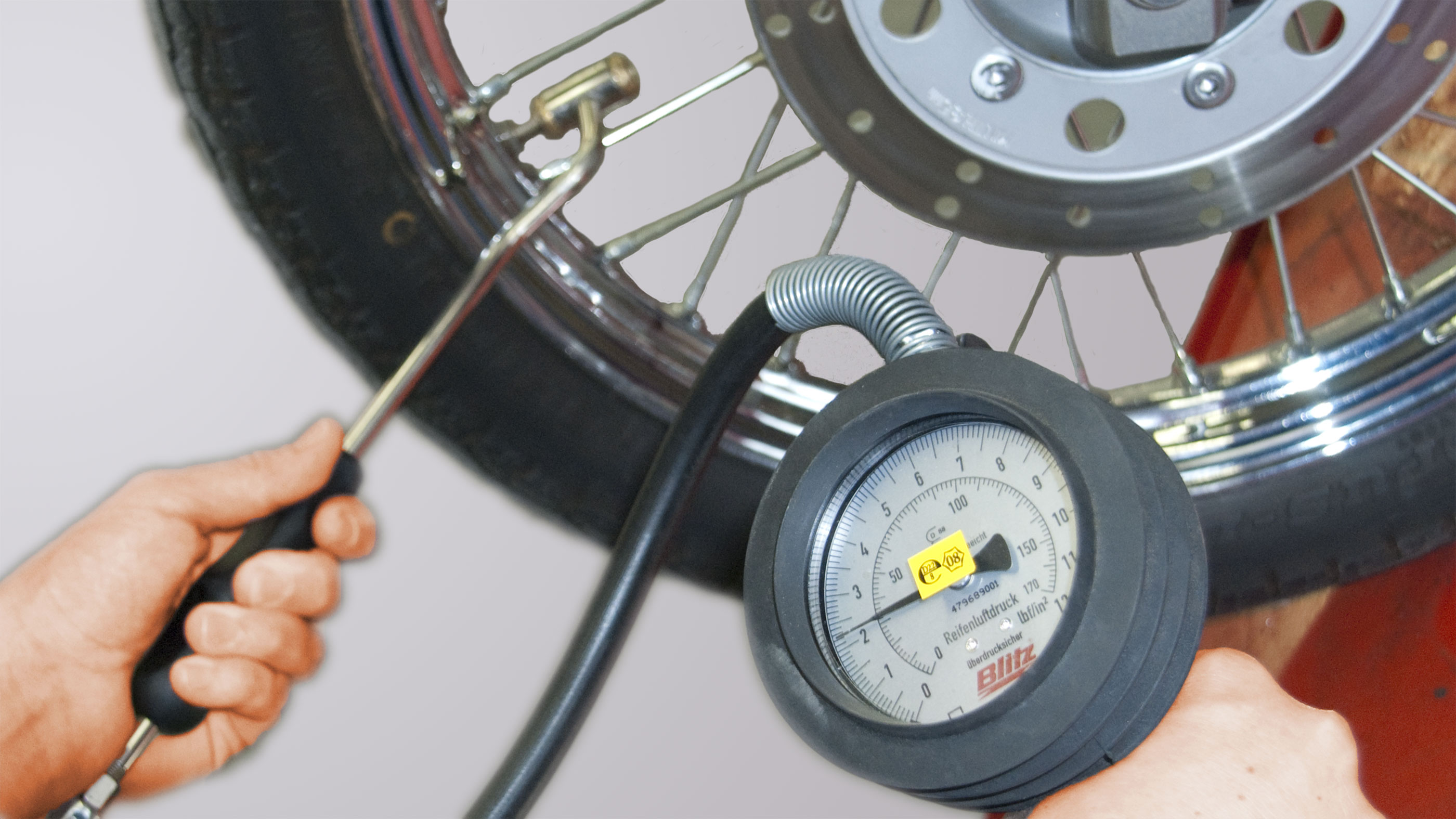
Check your tyre pressure regularly
Under-inflation by as little as 0.2 bar can noticeably affect handling. Conversely, over-inflation (= smaller contact surface) will wear out the centre of your tyre more quickly and reduce grip, which is why all tyre manufacturers recommend checking your tyre pressure every week - preferably with an accurate tyre pressure gauge.
It's important to inflate your tyres to the correct pressure when they are cold, as the pressure increases by 0.1-0.2 bar when the tyres are warm from riding. And if you're on the road for a long tour, it pays to carry out occasional interim checks when you stop for a break.

Measuring tread depth
By law, your tyres must have a minimum tread depth of 1.6 mm. It's safer to fit new tyres when you reach 2-3 mm at the latest, because tyres that have "worn square" also affect your motorbike's handling. You'll certainly know what we mean after your first change of tyres, if not before. Louis offers a range of tread-depth gauges that make light work of this job.
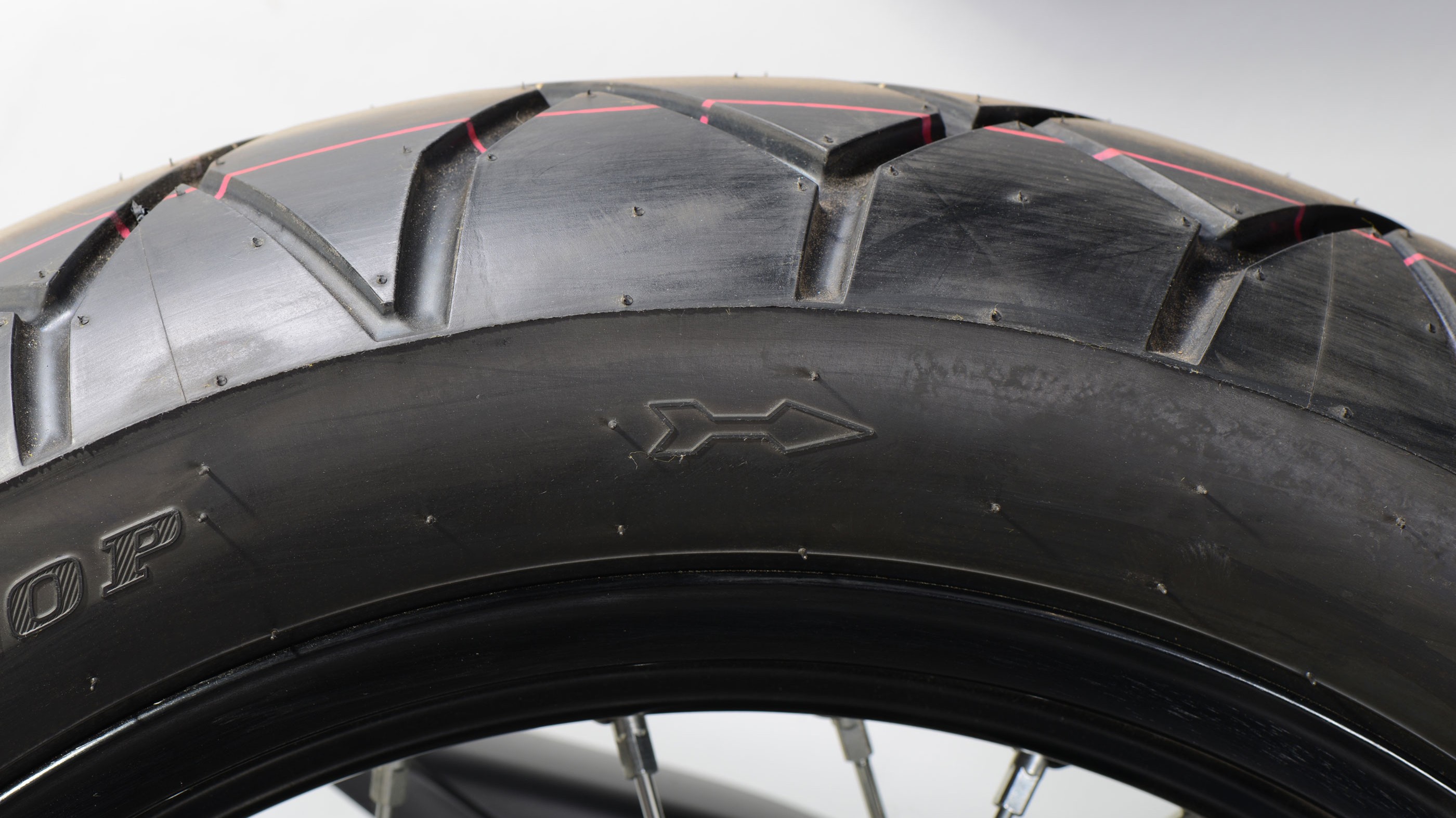
Rotation direction and tread wear indicators
Because modern tyres are optimised for a specific direction of rotation, arrows on the sidewall indicate whether the tyre has been fitted correctly. Small cross ribs (wear bars) in the tread of all motorcycle tyres indicate when a tyre is nearing the end of its service life.
However, the height of these so-called TWIs (tread wear indicators) does NOT correspond to the minimum tyre tread of 1.6 mm prescribed in Germany.
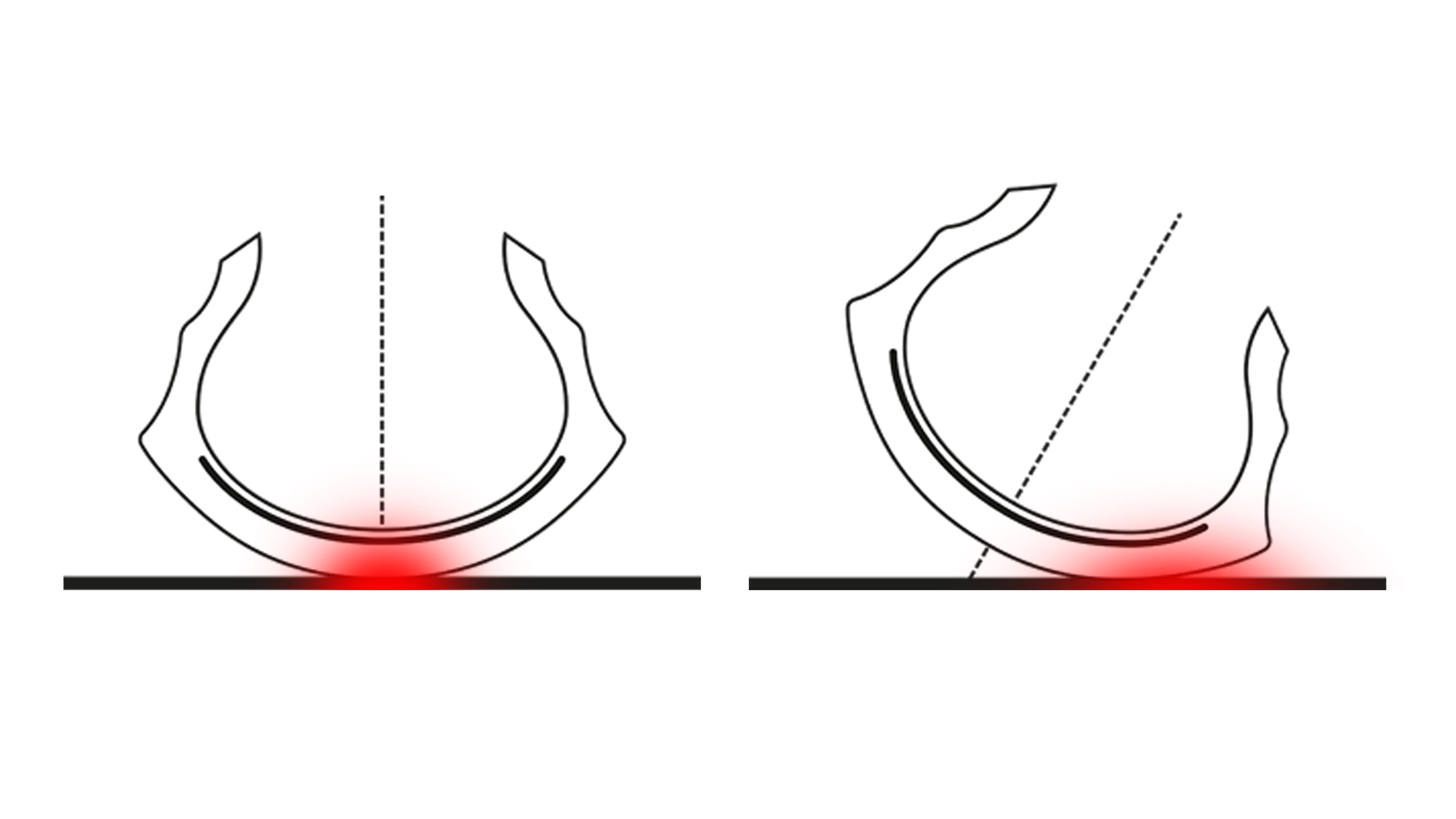
Running in new tyres
New tyres have a rather shiny, slippery surface due to the wax-like coating on the tread. It can take up to 200 km for this to wear away so that the tyres are properly "scuffed in".
In this phase, you should avoid abrupt acceleration and braking and go carefully when leaning into bends.

Emergency repairs to your motorcycle tyres
Generally speaking, it's important to check your tyres as often as possible (such as when filling up or checking your tyre pressures) for cracks, foreign bodies and any other signs of damage. And should you be unlucky enough to get a flat while out and about, many punctures can be provisionally dealt with using a tyre repair set. But we must emphasise that this is only a temporary solution! Ideally, a repaired tyre should only be on the road long enough to get you to the next workshop!
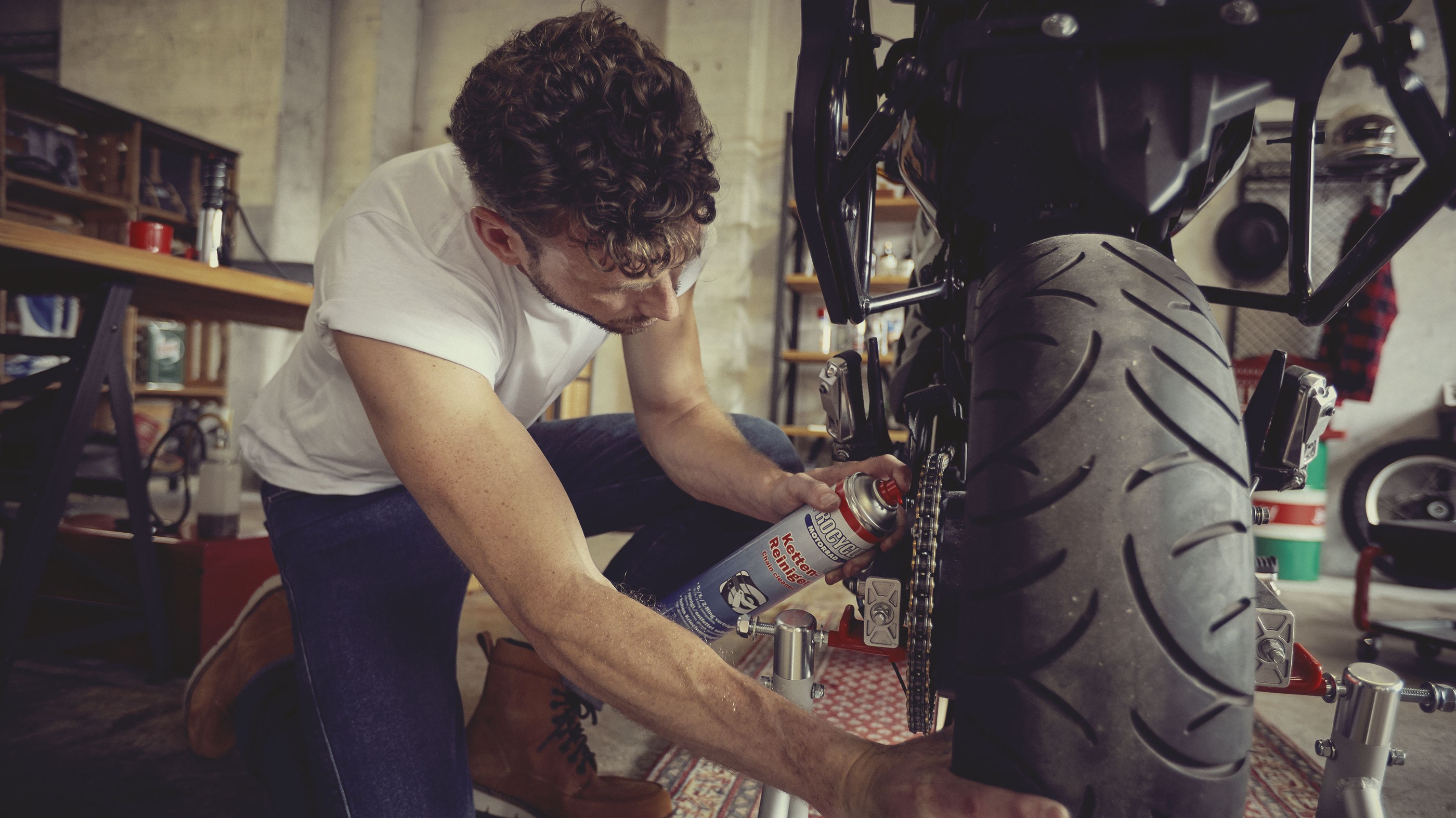
Tyre accessories for touring and workshop
Installation, inspection, repair: Louis has the right accessory for every tyre job.
Cross-ply or radial: the inner design of motorcycle tyres
Believe it or not, those round, black things actually represent a huge amount of sophisticated engineering. In addition to the rubber mixture and tread design, it is primarily the inner construction of a tyre that determine its strengths and how it handles.
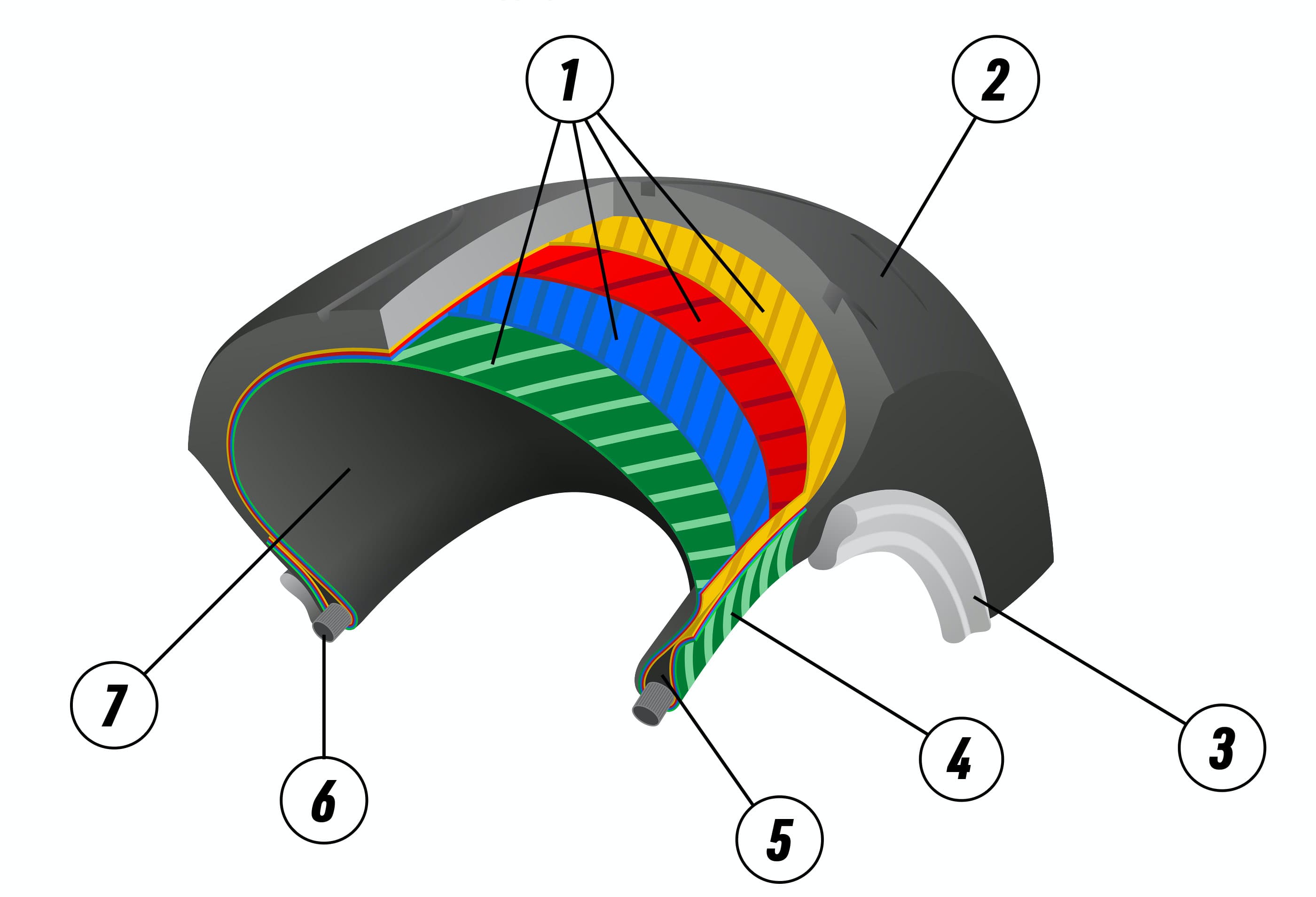
Cross-ply tyres
The name derives from the design of the carcass, the skeleton of the tyre if you like. In order to give the rubber a stable shape, cross-ply tyres have several layers of cords, from bead to bead – oriented at an angle to the direction of travel in a criss-crossing pattern. This design is now used almost exclusively in tyres for classic motorbikes, and for off-road tyres – where the flexibility of the carcass and its ability to adapt to the terrain is an advantage. Disadvantages during road use: the tyres tend to expand and heat up greatly at high speed.
- Diagonally oriented carcass plies
- Tread
- Rim
- Bead core
- Bead apex
- Carcass cover
- Airtight inner liner
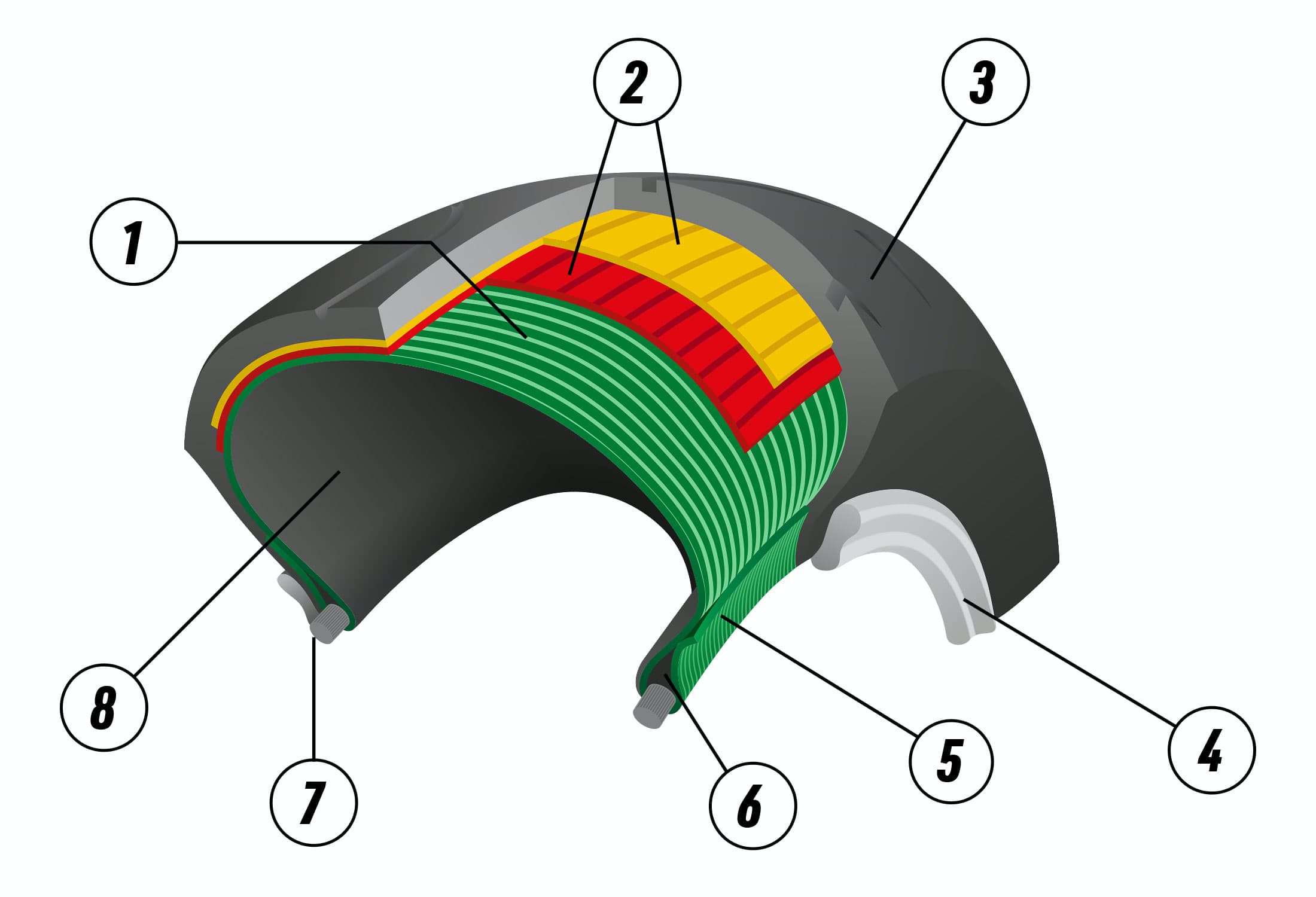
Radial tyres
The carcass of a radial tyre generally comprises just one or two plies which have the cords running at 90° to the direction of travel (i.e. radially to the wheel axle). This is covered by the belt plies, which (generally) run parallel to the direction of travel. The belt serves to prevent the tyre expanding as a result of centrifugal force. The single carcass layer generates less friction in the tyre, and consequently less heat – which is essential given the performance of modern motorcycles. Some manufacturers also use the belt ply to improve mileage performance in the centre of the tread and to give better sidewall grip when leaning into the bends, while other manufacturers achieve the same effect by using harder/softer rubber mixtures.
- Radially oriented carcass ply
- Tread
- Zero-degree belt
- Rim
- Bead core
- Bead apex
- Carcass cover
- Airtight inner liner

The sophisticated technology that goes into tread design means that modern sport and touring tyres are able to combine seemingly conflicting characteristics.
Some manufacturers also use the belt ply to improve mileage performance in the centre of the tread and to give better sidewall grip when leaning into the bends, while other manufacturers achieve the same effect by using harder/softer rubber mixtures.
- Harder rubber compound and/or stronger belt tension for high mileage performance.
- Softer rubber compound and/or weaker belt tension for better cornering grip
